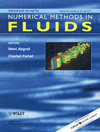
INTERNATIONAL JOURNAL FOR NUMERICAL METHODS IN FLUIDS
Scope & Guideline
Transforming Fluid Flow Challenges into Numerical Triumphs
Introduction
Aims and Scopes
- Numerical Methods Development:
The journal emphasizes the creation and refinement of numerical techniques, including finite element methods, finite volume methods, and spectral methods, aimed at improving the accuracy and efficiency of fluid dynamics simulations. - Fluid-Structure Interaction:
Research on the interaction between fluid flows and solid structures is a core area, encompassing methodologies that address coupling challenges and effects of fluid dynamics on structural integrity. - Multiphase Flow Modeling:
The journal explores methods for simulating multiphase flows, including interfaces and interactions between different fluid phases, which are critical in many engineering and natural processes. - Turbulence and Turbulent Flow Simulation:
A significant focus is placed on turbulence modeling and simulations, with contributions that investigate the behavior of turbulent flows and the development of advanced turbulence models. - Applications in Engineering and Environmental Sciences:
The journal serves as a platform for applying numerical methods to real-world problems in engineering and environmental sciences, such as aerodynamics, hydrodynamics, and environmental fluid mechanics. - Machine Learning and AI Integration:
There is a growing interest in integrating machine learning and artificial intelligence techniques into numerical methods, enhancing predictive capabilities and optimization processes in fluid dynamics.
Trending and Emerging
- Artificial Intelligence and Machine Learning:
The integration of AI and machine learning techniques in numerical methods is gaining momentum, with researchers exploring their potential to enhance simulation accuracy, optimize designs, and automate processes. - Advanced Turbulence Modeling:
There is a marked increase in publications focusing on advanced turbulence models, including large eddy simulations and machine learning-based turbulence predictions, highlighting a move towards more accurate representations of turbulent flows. - Hybrid Numerical Approaches:
The trend towards hybrid methods that combine different numerical techniques (e.g., finite volume with lattice Boltzmann methods) is becoming more prominent, reflecting a need for more robust solutions to complex fluid dynamics problems. - Real-Time and High-Performance Computing Applications:
Research is increasingly focused on developing algorithms that leverage high-performance computing and real-time simulation capabilities, particularly for applications in engineering and environmental monitoring. - Complex Boundary Conditions and Interfaces:
Studies addressing the challenges of complex boundary conditions and interface tracking in multiphase flows are emerging, driven by the need for accurate simulations in practical applications.
Declining or Waning
- Traditional Computational Approaches:
There appears to be a waning interest in conventional computational fluid dynamics methods that do not incorporate modern enhancements or hybrid approaches, as researchers increasingly adopt more sophisticated and integrated techniques. - Simplistic Turbulence Models:
Basic turbulence models, such as those relying solely on Reynolds-averaged Navier-Stokes equations, are being overshadowed by more complex and accurate models, indicating a shift towards a preference for advanced turbulence modeling techniques. - Static Mesh Techniques:
Research focusing on fixed or static mesh approaches is decreasing as adaptive and dynamic mesh methods gain traction, providing better solutions for complex flow scenarios. - Single-Phase Flow Studies:
There is a noticeable decline in the publication of studies exclusively focused on single-phase flows, as the field increasingly emphasizes multiphase interactions and their complexities.
Similar Journals
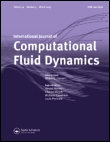
INTERNATIONAL JOURNAL OF COMPUTATIONAL FLUID DYNAMICS
Advancing the Frontiers of Fluid Dynamics ResearchInternational Journal of Computational Fluid Dynamics, published by Taylor & Francis Ltd, is a prominent academic journal dedicated to advancing the field of computational fluid dynamics (CFD). Since its establishment in 1993, the journal has provided a platform for disseminating high-quality research, covering a wide spectrum of topics across various engineering disciplines, including Aerospace Engineering, Computational Mechanics, and Mechanical Engineering. With an impact factor placing it within Q2 categories across several relevant fields, the journal holds a significant position in the academic community, evidenced by its diverse Scopus rankings. Researchers and practitioners engage with state-of-the-art methodologies and innovative applications presented within its pages, contributing to both theoretical development and practical solutions in fluid dynamics. Though it currently operates under a subscription model, the journal remains a vital resource for those seeking to deepen their understanding of computational techniques and their application in industries spanning engineering and physics. This makes it an essential read for professionals, researchers, and students alike, striving for excellence in this dynamic and evolving area of study.
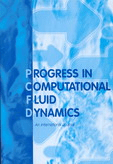
PROGRESS IN COMPUTATIONAL FLUID DYNAMICS
Innovating Computational Approaches for Fluid DynamicsPROGRESS IN COMPUTATIONAL FLUID DYNAMICS, published by InderScience Enterprises Ltd, is a vital journal in the realms of Computer Science Applications and Condensed Matter Physics. Established in 2001, this journal serves as a platform for disseminating innovative research findings and technological advancements in computational fluid dynamics, targeting both theoretical and applied aspects. With a current impact factor positioning it in the Q4 quartile for its fields, it captures a wide array of topics including numerical methods, simulation techniques, and real-world fluid dynamics applications, fostering dialogue among researchers, practitioners, and educators alike. Although it does not provide Open Access options, it remains an important resource for those investigating fluid dynamics phenomena. As it continues to evolve through 2024, PROGRESS IN COMPUTATIONAL FLUID DYNAMICS is positioned to contribute significantly to the scientific community, addressing core challenges while promoting collaboration and knowledge exchange.
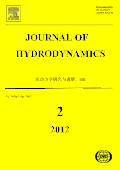
Journal of Hydrodynamics
Shaping the Future of Mechanical Engineering and HydrodynamicsWelcome to the Journal of Hydrodynamics, a premier academic journal dedicated to pioneering research in the fields of Condensed Matter Physics, Mechanical Engineering, Mechanics of Materials, and Modeling and Simulation. Published by Springer, this esteemed journal has been a vital resource since its inception in 1990 and boasts a notable Q1 ranking across its relevant categories, underscoring its importance in advancing knowledge and innovation. With a robust Scopus ranking reflecting its impact—such as being in the 82nd percentile in Mathematics: Modeling and Simulation and the 75th percentile in various engineering disciplines—the journal serves as a critical platform for researchers, professionals, and students. While not currently an open-access publication, the Journal of Hydrodynamics remains committed to fostering scholarly dialogue and disseminating high-quality research that shapes the future of its field. Our mission is to provide a comprehensive forum for the discussion of theoretical and applied hydrodynamics, potentially influencing both academic inquiry and practical applications worldwide.
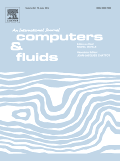
COMPUTERS & FLUIDS
Advancing the Frontiers of Computational Fluid DynamicsCOMPUTERS & FLUIDS, published by PERGAMON-ELSEVIER SCIENCE LTD, is a premier journal in the fields of Computer Science and Engineering, with a distinguished history dating back to 1973. Its Q1 ranking in both Computer Science (Miscellaneous) and Engineering (Miscellaneous) illustrates its high impact and relevance, being positioned among the top tier of scientific publications. With a robust focus on the intersection of computational methods and fluid dynamics, this journal serves as a vital platform for researchers, professionals, and students dedicated to advancing knowledge and technology within these domains. Although it is not an open-access journal, its articles are accessible through various academic institutions and libraries, ensuring that vital research reaches its intended audience. Readers can explore innovative methodologies and applications, reinforcing the journal's commitment to enhancing the understanding of fluid mechanics through cutting-edge computational approaches. For more details, visit the official website of COMPUTERS & FLUIDS to stay abreast of the latest research advancements.

Journal of Mathematical Fluid Mechanics
Pioneering Research in the Mathematical Foundations of Fluid BehaviorThe Journal of Mathematical Fluid Mechanics, published by SPRINGER BASEL AG, is a prestigious academic journal dedicated to the study of fluid dynamics through the lens of mathematics. With its ISSN 1422-6928 and E-ISSN 1422-6952, this journal has firmly established itself in the academic community since its inception in 2004, converging knowledge across various mathematical disciplines until 2024. Recognized in the top Q1 quartile rankings for Applied Mathematics, Computational Mathematics, Condensed Matter Physics, and Mathematical Physics as of 2023, it reflects a strong commitment to high-quality research and innovation. The journal features a variety of research articles, reviews, and theoretical frameworks, serving as an essential resource for researchers, professionals, and students eager to explore the mathematical principles underlying fluid mechanics. While it does not offer open access, the impact of its contributions resonates within interdisciplinary fields, advancing both theoretical insights and practical applications.
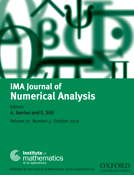
IMA JOURNAL OF NUMERICAL ANALYSIS
Empowering Scholars through Rigorous AnalysisIMA Journal of Numerical Analysis, published by Oxford University Press, stands as a premier platform for cutting-edge research in the field of numerical analysis, exemplifying the latest advancements and methodologies in applied, computational, and general mathematics. Since its inception in 1981, this esteemed journal has continually contributed to the academic community by publishing high-quality, peer-reviewed articles that foster innovation and collaboration among researchers. With an impressive Q1 ranking across multiple categories, including Applied Mathematics and Computational Mathematics, it plays a crucial role in disseminating knowledge, as indicated by its Scopus rankings which place it in the top 25% of journals within its field. Although the journal is not open access, it remains a vital resource for academics, professionals, and students eager to engage with the ongoing evolution of numerical methods. By serving as a conduit for novel ideas and rigorous research, the IMA Journal of Numerical Analysis ensures that its contributors and readers are at the forefront of this dynamic discipline.

Computational Methods for Differential Equations
Transforming Complex Problems into Computational SolutionsComputational Methods for Differential Equations is a prominent academic journal dedicated to the exploration and application of computational techniques in the realm of differential equations. Published by UNIV TABRIZ, this open-access journal has been providing unrestricted access to groundbreaking research since 2013, making it a valuable resource for the global academic community, particularly in Iran. It has carved out a niche within the fields of Algebra and Number Theory, Applied Mathematics, and Numerical Analysis, maintaining a Q3 quartile ranking in 2023 across these categories. Researchers, professionals, and students alike will find the journal's commitment to disseminating innovative computational methodologies essential for advancing knowledge and developing robust solutions to complex mathematical problems. With its ISSN 2345-3982 and E-ISSN 2383-2533, the journal ensures wide visibility and accessibility, serving a diverse audience and promoting scholarly discourse.
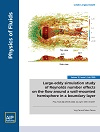
PHYSICS OF FLUIDS
Exploring the Dynamics of Fluids with PrecisionPHYSICS OF FLUIDS is a premier journal published by AIP Publishing that serves as a vital resource for the fluid mechanics community. With an impressive impact factor and a consistent ranking in the Q1 quartile across multiple related disciplines—including Computational Mechanics, Condensed Matter Physics, Fluid Flow and Transfer Processes, Mechanical Engineering, and Mechanics of Materials—this journal is renowned for disseminating high-quality research in the dynamic field of fluid dynamics. Covering a wide range of topics, from fundamental fluid mechanics to advanced computational modeling, PHYSICS OF FLUIDS plays a crucial role in advancing understanding and fostering innovation in both academic and industrial applications. With its strong reputation and significant readership, this journal is essential for researchers, professionals, and students seeking to stay updated on the latest developments in fluid physics.
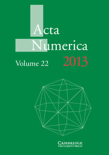
ACTA NUMERICA
Unveiling New Horizons in Numerical Mathematics.ACTA NUMERICA, published by Cambridge University Press, stands as a premier journal in the fields of Mathematics and Numerical Analysis since its inception in 1992. With an impressive Scopus ranking that places it in the 99th percentile and a prestigious Q1 category status in both Mathematics (miscellaneous) and Numerical Analysis for 2023, it has established itself as a leading platform for cutting-edge research. The journal's scope encompasses a wide range of numerical methods and computational techniques that address complex mathematical problems, making it an essential resource for researchers, professionals, and students alike. Although it does not provide Open Access, its commitment to quality and innovation in the mathematical sciences continues to attract submissions from around the globe. Published in the United Kingdom, ACTA NUMERICA remains a vital channel for disseminating significant advancements in numerical methodologies.
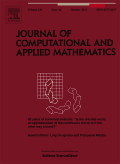
JOURNAL OF COMPUTATIONAL AND APPLIED MATHEMATICS
Exploring the Depths of Mathematical ApplicationsJOURNAL OF COMPUTATIONAL AND APPLIED MATHEMATICS, published by Elsevier, stands as a premier platform for researchers and practitioners in the fields of applied and computational mathematics. With an impressive convergence history from 1975 to 2025, this journal has established itself as a crucial reference point for innovative mathematical theories, methodologies, and applications. Holding a distinguished position in Scopus rankings—#85 out of 635 in Applied Mathematics and #36 out of 189 in Computational Mathematics—it operates in the highly competitive Q2 quartile for both disciplines as of 2023. Although currently not designated as an open-access journal, it remains widely respected for its rigorous peer-review process and high-quality research contributions. Researchers and professionals seeking to advance their work and engage with cutting-edge developments will find this journal an invaluable resource, fostering a deeper understanding and collaboration within the mathematical community.